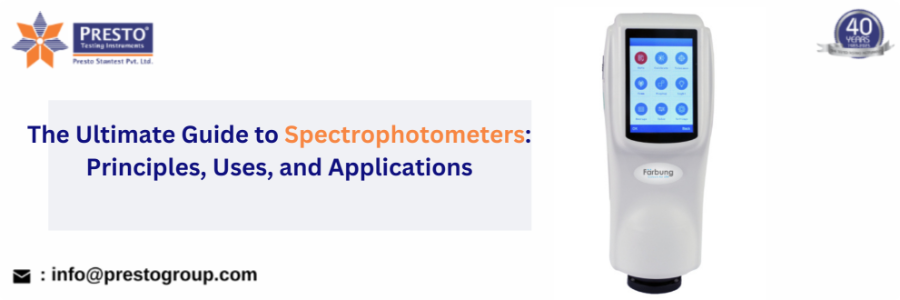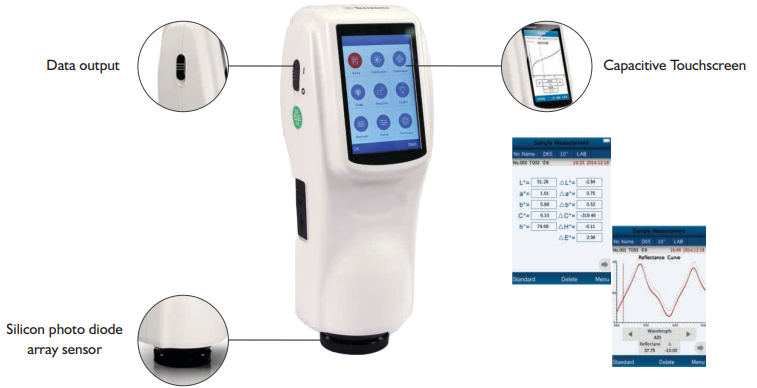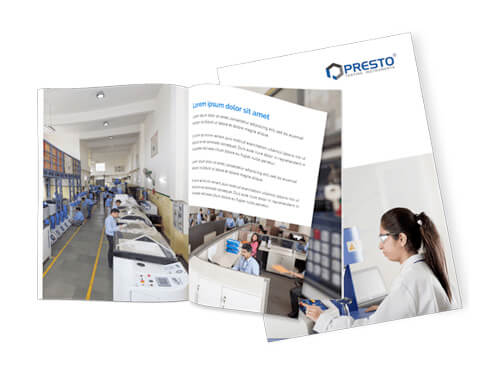The Ultimate Guide to Spectrophotometers: Principles, Uses, and Applications

Gaurav Malhotra-Testing Instrument Expert
15-03-2025
A spectrophotometer is a special tool that helps scientists and industries measure how much light a substance absorbs or passes through. It is widely used in labs, factories, and research centers to check the quality of medicines, food, water, and more.
This guide will explain in simple terms how a spectrophotometer works, what it is used for, and why it is important in different industries. Whether you're a student, researcher, or business owner, this article will help you understand the basics of spectrophotometry in an easy and clear way.
What is a Spectrophotometer?
A spectrophotometer is a critical analytical instrument used to measure light absorbance or transmittance in a sample at specific wavelengths. It plays an essential role in scientific research, pharmaceuticals, environmental monitoring, and industrial quality control.

Digital Spectrophotometer
A digital spectrophotometer is an advanced version of traditional models, offering enhanced accuracy and ease of use. These devices come equipped with features like:
- Touchscreen interfaces for user-friendly operation
- Automated calibration for precise measurements
- Data storage to track previous readings
- Connectivity options for remote data access
Digital spectrophotometers are widely used in research laboratories, medical diagnostics, and industries requiring precise light absorption measurements. They can analyze liquids, solids, and gases, making them versatile for multiple applications.
Spectrophotometry: The Science Behind How It Works
The working principle of a spectrophotometer is based on the Beer-Lambert law, which states that the amount of light absorbed by a substance in a solution is directly proportional to its concentration and path length. The basic process includes:
- Passing a beam of light through a sample.
- Measuring the light intensity before and after passing through the sample.
- Determining the concentration based on the difference in intensity.
This principle is essential in chemistry, biology, and environmental science for accurate molecular analysis. By selecting different wavelengths, spectrophotometers can identify and quantify specific compounds in a sample.
How to Use Spectrophotometer ?
Using a spectrophotometer requires careful execution to ensure precise results. Follow these steps:-
- Power on the Device – Allow the spectrophotometer to warm up for stable operation.
- Select the Wavelength– Choose the correct wavelength for the analysis.
- Calibrate the Machine – Insert a blank solution to establish a reference point.
- Prepare the Sample – Fill a clean cuvette with the sample solution.
- Insert the Sample – Place the cuvette in the spectrophotometer’s sample holder.
- Measure the Absorbance – Record the displayed absorbance/transmittance values.
- Repeat for Additional Samples– Ensure consistency in measurements.
- Clean the Equipment–– Proper cleaning extends the instruments lifespan and ensures accuracy.
Spectrophotometer Procedure for Accurate Results
Following a proper spectrophotometer procedure is crucial for obtaining reliable results:
- Prepare the Sample– Ensure it is free from contaminants.
- Calibrate the Spectrophotometer– Use a blank solution for zeroing.
- Measure the Sample– Record the absorbance at the selected wavelength.
- Analyze the Data– Compare results with standard reference charts.
- Clean the Equipment–– Maintain the instrument for long-term precision.
Spectrophotometer Uses Across Industries
Spectrophotometers are indispensable tools across various sectors:-
- Pharmaceutical Industry–– Ensures accurate drug formulations.
- Environmental Monitoring– Analyzes water and air pollutants.
- Food & Beverage Industry– Detects contaminants and assesses nutrient content.
- Medical Diagnostics– Used for blood and urine sample analysis.
- Biotechnology– Measures DNA, RNA, and protein concentrations.
Spectrophotometer Diagram & Components
A spectrophotometer consists of several critical components:

- Light Source– Produces the required wavelength of light.
- Monochromator– Selects the specific wavelength for analysis.
- Sample Holder – Holds the cuvette with the test sample.
- Detector – Measures the intensity of transmitted or absorbed light.
- Processor & Display – Converts the detected signals into readable data.
Understanding these components helps in troubleshooting and optimizing spectrophotometric analysis.
Spectrophotometer in Laboratory Applications
In laboratory settings, spectrophotometers are used for:
- Quantitative Analysis – Measuring substance concentration in solutions.
- Biochemical Research– Studying enzymes, proteins, and nucleic acids.
- Microbiology– Monitoring bacterial growth.
- Material Science– Characterizing the optical properties of materials.
- Forensic Science – Identifying substances based on spectral properties.
Difference Between Spectrometer and Spectrophotometer.
| Feature | Spectrometer | Spectrophotometer |
| Function | Measures light intensity over a wavelength range | Measures absorbance or transmittance of light |
| Application | Used in physics, astronomy, material science | Used in chemistry, biology, medical diagnostics |
| Light Source | Uses broad-range light wavelengths | Uses specific wavelengths for sample analysis |
| Output | Provides spectral data | Provides quantitative sample concentration data |
| Example | Analyzing emission spectra of stars | Measuring chemical concentration in a solution |
While both devices analyze light, spectrophotometers focus on absorption and transmittance, making them ideal for chemical analysis.
Applications of Spectrophotometers
Spectrophotometers have diverse applications, including:
- Medical & Clinical Analysis – Blood analysis and enzyme studies.
- Chemical Analysis – Identifying unknown substances.
- Agriculture & Soil Science– Analyzing soil nutrients.
- Industrial Quality Control– Ensuring consistency in manufacturing.
- Academic Research–– Supporting studies in physics, chemistry, and biology.
Why Choose Presto Stantest for Spectrophotometers?
PrestoGroup is a trusted manufacturer and supplier of high quality spectrophotometers for accurate color measurement.
Key Benefits:-
- Accurate Color Measurement – Delivers precise and repeatable results.
- Advanced Optical Technology – High-quality sensors for better accuracy.
- Easy-to-Use Interface – Simple controls for smooth operation.
- Meets Global Standards – Complies with ISO, ASTM, and more.
- Wide Industry Use – Perfect for printing, packaging, and automotive sectors.
- Excellent After-Sales Support – Reliable customer service and technical help.
Presto Stantest spectrophotometers offer high performance and reliability, making them the perfect choice for accurate color quality testing.
Frequently Asked Questions, FAQs
Q1.What is a spectrophotometer used for?
Ans. A spectrophotometer measures the absorbance or transmittance of light through a sample to analyze chemical composition and concentration in pharmaceuticals , environmental science, and medical diagnostics.
Q2.What is the basic principle of a spectrophotometer?
Ans. It operates based on the beer-lambert law , stating that absorbance is proportional to concentration and path length, helping determine the amount of light absorbed at a specific wavelength.
Q3. What tests are performed using a spectrophotometer?
Ans.
- Blood and urine analysis in medical diagnostics
- Water quality testing for contaminants
- DNA and protein quantification in biotechnology
- Food and beverage quality control
Contact Us for the Best Spectrophotometer Price
Looking for the best spectrophotometer price ? Contact us today for expert advice and competitive pricing:
Phone: +91 9210 903 903
Email: info@prestogroup.com
Our team is ready to assist you in selecting the perfect spectrophotometer for your needs.
Summary & Final Thoughts
Spectrophotometers play a crucial role in modern science and industry , ensuring precise chemical and biological analysis. Understanding their principles, uses, and applications helps maximize their benefits in research, diagnostics, and quality control.
Recent News
- Paper & Packaging Testing Instruments
- Paint, Plating & Coating Testing Instruments
- Plastic & Polymer Testing Instruments
- Environmental Testing Chambers
- PET & Preform Testing Instruments
- Color Measuring Testing Instruments
- View Entire Range Instruments

Catalogue 2023
Get information about new product launches, research, innovation and endeavors at Presto.
download Free CopyNeed more information
Connect with us for your business enquiries. Generally we respond within one or two working days.
send enquiriesContact Us
Get a Quote
